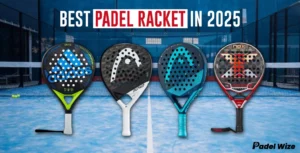Padel, a sport that blends the best elements of tennis and squash, is rapidly growing in popularity worldwide. With its rise in prominence comes a surge in interest for organizing whether you’re a seasoned organizer or a newcomer eager to make your mark, understanding the ins and outs of planning and executing a successful padel tournaments and events can be a game-changer. Here’s a comprehensive guide to help you navigate through the process, from initial planning to the final execution.
Related blog Organizing a Padel Deporte Tournament: A Step-by-Step Guide
1. Understanding the Basics
Before diving into the logistics, it’s crucial to understand the core aspects of a padel tournament. Padel is typically played in doubles, and tournaments can vary in scale from local club competitions to international championships. The format can be knockout, round-robin, or a mix of both, depending on the number of participants and the desired level of competition.
2. Setting Objectives
Define the purpose of your tournament. Are you aiming to promote the sport, raise funds, or simply create a fun community event? Your objectives will guide your planning and help you make decisions about the scale and scope of the event.
Related blog How to Improve Your Game with the Right Padel Racquet
3. Choosing the Right Date and Venue
Select a date that avoids major holidays and local events to maximize participation, and choose a venue with ample courts, accessible facilities, and adequate amenities to ensure a seamless experience for players and spectators alike.
Date:
Select a date that doesn’t conflict with major holidays or other significant events in the padel calendar. Consider local weather conditions and the availability of potential participants.
Venue:
Choose a venue with adequate facilities, including multiple courts, locker rooms, and seating for spectators. Ensure the venue is accessible and has the necessary amenities. If it’s a large-scale event, you might need to rent additional courts or partner with multiple locations.
4. Budgeting and Sponsorship
Select a date that avoids major holidays and local events to maximize participation, and choose a venue with ample courts, accessible facilities, and adequate amenities to ensure a seamless experience for players and spectators alike
Budgeting:
Create a detailed budget covering all aspects of the event, including court rentals, equipment, staff, marketing, and prizes. Factor in potential revenue from entry fees, sponsorships, and ticket sales.
Sponsorship:
Seek sponsorships from local businesses, sports brands, or other organizations. Padel tournaments and events Sponsorships can help cover costs and provide additional resources, such as prizes or promotional materials. Offer sponsors visibility through event signage, social media mentions, and branded merchandise.
Related blog Gear Up for Success: A Guide to Padel Equipment
5. Tournament Structure and Format
Decide on the structure and format of the tournament based on your objectives and the number of participants. Common formats include:
- Knockout: Teams are eliminated after a loss, culminating in a final match.
- Round-Robin: Each team plays every other team, with the top teams advancing to knockout stages or finals.
- Pool Play: Teams are divided into pools, with the top teams from each pool advancing to knockout rounds.
Scheduling:
Create a schedule that ensures smooth progression of matches. Account for potential delays and ensure players have adequate rest between matches.
6. Registration and Promotion
Implement a streamlined online registration system to simplify the entry process for participants, and utilize social media, local media, and partnerships to effectively promote the event and attract a broad audience
Registration:
Set up an efficient registration process, ideally with an online registration platform. Clearly communicate deadlines, entry fees, and any required documentation.
Promotion:
Promote your tournament through various channels, including social media, local media, and padel clubs. Create engaging content to attract participants and spectators. Consider leveraging influencers or local personalities to boost visibility.
Related blog Organizing Successful Padel Tournaments and Events
Conclusion
Organizing a padel tournament is more than just a series of matches—it’s an opportunity to foster community, celebrate the sport, and create lasting memories for players and spectators alike. By carefully planning each stage, from defining your objectives to executing the event and gathering feedback, you can ensure a successful tournament that meets your goals and delights everyone involved.







